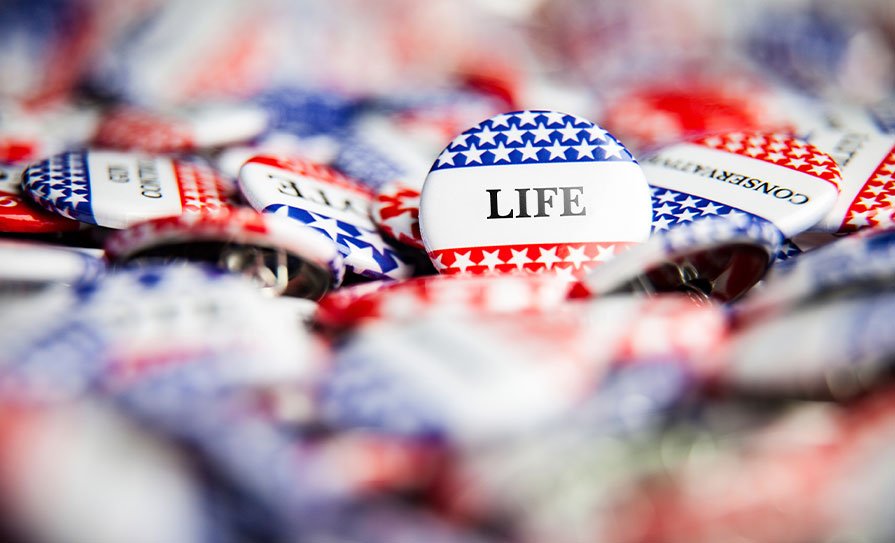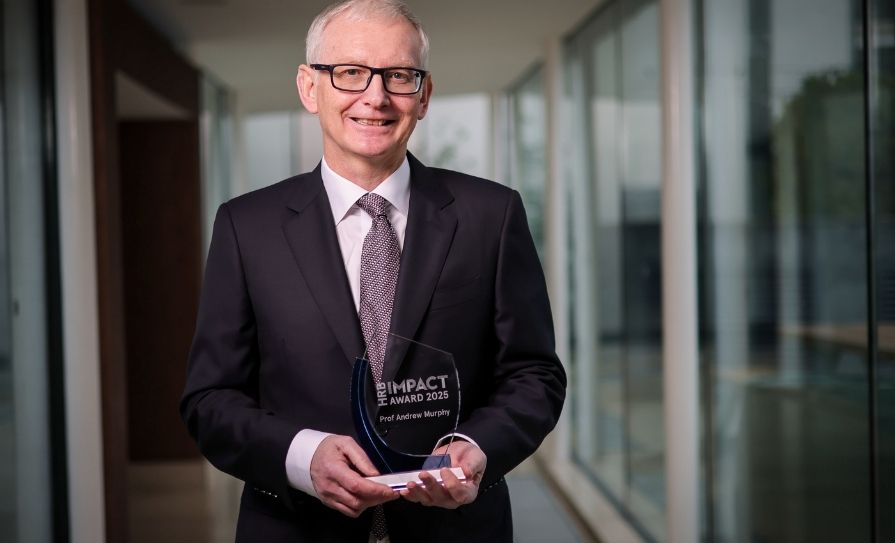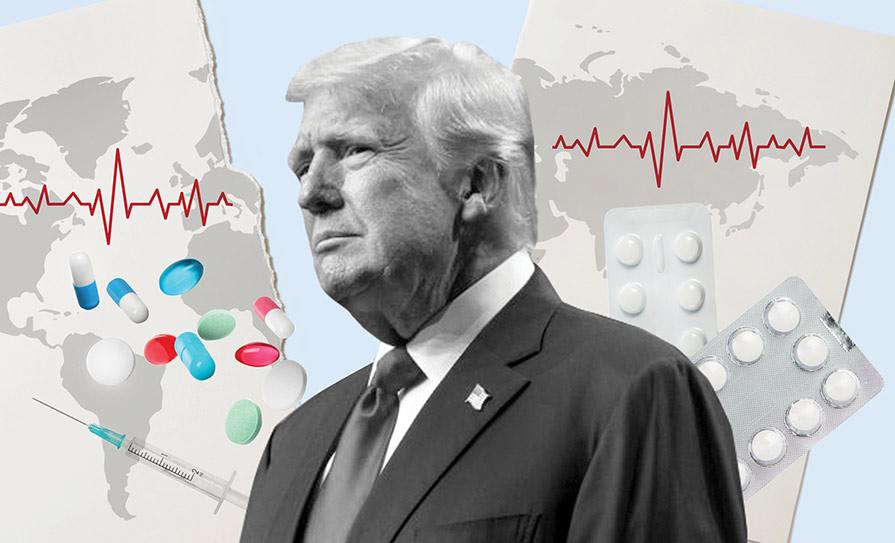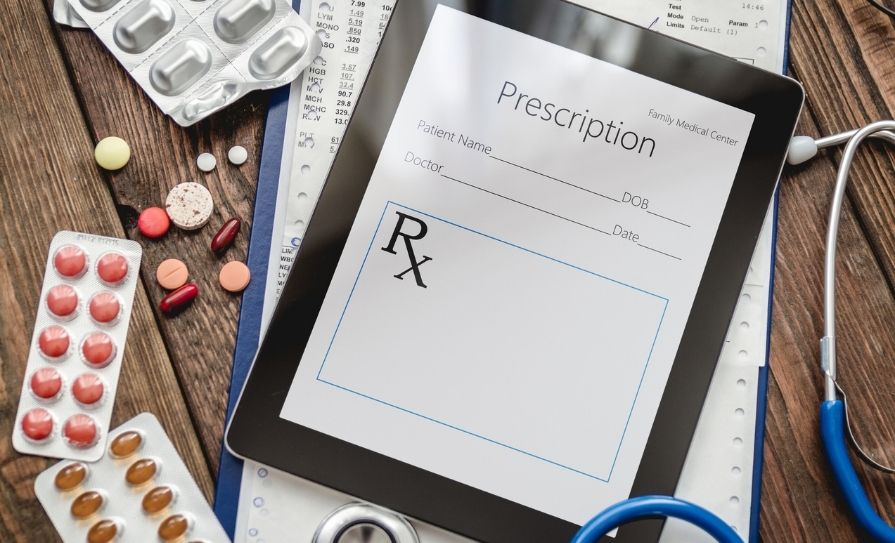Bette Browne examines the healthcare impact of the US Supreme Court’s decision to reverse Roe v Wade.
When the US Supreme Court struck down the constitutional right to abortion, it was hailed by some as protecting life.
However, many doctors say the decision will have a severely negative effect on healthcare and imperil their ability to safeguard the health and lives of their patients.
With the constitutional right ended, nearly half of America’s 50 states are now restricting or banning abortions outright, without exceptions for rape or incest. Some doctors are concerned that such bans could see them potentially facing a choice between upholding their oath or breaking the law.
The Supreme Court’s decision paved the way for 13 states – Arkansas, Idaho, Kentucky, Louisiana, Mississippi, Missouri, North Dakota, Oklahoma, South Dakota, Tennessee, Texas, Utah, and Wyoming – to immediately enact abortion bans that include provisions that would make performing an abortion a crime punishable by prison time. About a dozen other states are also planning to allow bans or other limits on the procedure to take effect.
Some doctors fear that such legal strictures could make it impossible for them to fulfil their professional and ethical obligations to provide the best care to their patients. Dr DeShawn Taylor, an Obstetrician and Gynaecologist who provides abortion services in Arizona, put it this way on NPR radio: “I have no interest in going to jail – I did not go to medical school to go to jail.”

Dr Lisa Harris, Associate Chair of Obstetrics and Gynaecology at the University of Michigan, has explored some of the choices now facing many doctors across the country.
“In Michigan a 1931 law criminalising abortion will come into effect,” she wrote in the New England Journal of Medicine (NEJM).
“It’s among the strictest laws in the country, permitting abortion only to ‘preserve the life’ of a pregnant person (but) it’s unclear what, precisely, ‘lifesaving’ means. What does the risk of death have to be and how imminent must it be? Might abortion be permissible in a patient with pulmonary hypertension, for whom we cite a 30-to-50 per cent chance of dying with ongoing pregnancy? Or must it be 100 per cent?
“When we diagnose a new cancer during pregnancy, some patients decide to end their pregnancy to permit immediate surgery, radiation or chemotherapy; treatments that can cause significant foetal injury. Will abortion be permissible in these cases, or will patients have to delay treatment until after delivery? These patients’ increased risk of death may not manifest for years when they have a recurrence that would have been averted by immediate cancer treatment. We’ve identified countless similar questions.”
It is not that long ago since these types of questions arose in Ireland before the repeal of the Eight Amendment in 2018. Indeed, Ireland’s experience was cited in the NEJM on 13 July by Prof Zita Lazzarini, who teaches health law and bioethics at the University of Connecticut Health Centre and Harvard School of Public Health.
“State abortion restrictions will immediately endanger anyone who has a health- or life-threatening pregnancy complication, such as miscarriage, premature labour or ectopic pregnancy. Deaths reported in Ireland, Poland and elsewhere painfully illustrate the risks to women’s lives from such laws’ chilling effect on physicians who fear that even managing a miscarriage could expose them to legal or criminal liability.”
Reversal
The US Supreme Court’s ruling on 24 June reversed a right that had been guaranteed under the 1973 landmark decision in Roe v Wade. The dissenting judges in the ruling stated: “After today, young women will come of age with fewer rights than their mothers and grandmothers had.”
They pointed out that Americans have relied on the availability of safe and legal abortion for nearly 50 years. Women have abortions for a variety of reasons, including where contraception failed or was unavailable, sex was non-consensual, or a planned pregnancy involved a serious foetal abnormality or maternal health complications, for example. Some procedures and medications used in abortions are also used when treating women who miscarry, but now there are concerns that such treatment may be denied or delayed, owing to the chilling effect of potential prosecution.
The dissenters were especially critical of the reliance of their fellow justices on “originalism”, the theory that the US Constitution should be interpreted as it would have been understood at its adoption in 1789.
“Those responsible for the original Constitution, including the 14th Amendment (in 1868), did not perceive women as equals and did not recognise women’s rights. When the majority says that we must read our foundational charter as viewed at the time of ratification, it consigns women to second-class citizenship.
“Today’s decision, taken on its own, is catastrophic enough. As a matter of constitutional method, the majority’s commitment to replicate in 2022 every view about the meaning of liberty held in 1868 has precious little to recommend it.”
Women living in poverty will suffer most, they emphasised, and may even die employing an unsafe method of abortion.
“In states that bar abortion, women of means will still be able to travel to obtain the services they need. It is women who cannot afford to do so who will suffer most.
“These are the women most likely to seek abortion care in the first place. Women living below the federal poverty line experience unintended pregnancies at rates five times higher than higher income women do, and nearly half of women who seek abortion care live in households below the poverty line. Others – those without money or childcare or the ability to take time off from work – will not be so fortunate. Maybe they will try an unsafe method of abortion, and come to physical harm, or even die.”
A poll in the weeks before the 24 June ruling showed that three-quarters of Americans wanted to keep the right to abortion in place. On 27 June, three days after the decision, a majority of Americans said they disagreed with the ruling and believed it was politically motivated.
“With this decision,” President Joe Biden said, “the conservative majority of the Supreme Court shows how extreme it is, how far removed they are from the majority of this country. The court has taken away a constitutional right that is so fundamental to so many Americans. They didn’t limit it. They simply took it away. That’s never been done to a right so important to so many Americans.”
“Let’s be very clear: The health and life of women in this nation are now at risk. Women could be punished for protecting their health. Doctors will be criminalised for fulfilling their duty to care.” He added that the decision makes the United States “an outlier among developed nations on protecting reproductive rights”.
In some ways, the decision was not surprising and its likelihood had been leaked some weeks earlier. The make-up of the Supreme Court with the appointment of three conservative judges during the presidency of Donald Trump, made the decision almost inevitable.
This was a point also referred to by the dissenting justices: “Mississippi – and other states too – knew exactly what they were doing in ginning up new legal challenges to Roe. Other states quickly followed: Between 2019 and 2021, eight states banned abortion procedures after six to eight weeks of pregnancy, and three states enacted all-out bans. Mississippi itself decided in 2019 that it had not gone far enough. The year after enacting the law under review, the state passed a six-week restriction. A state senator who championed both Mississippi laws said the obvious out loud. ‘[A] lot of people thought finally we have (a conservative court) and so now would be a good time to start testing the limits of Roe.’”
Individual states had indeed been restricting abortion rights for some time. In Texas, for example, a state law that is set to go into effect bans almost all abortions from the moment of fertilisation and many other states are considering or implementing similar laws.
State abortion restrictions will immediately endanger anyone who has a health- or life-threatening pregnancy complication, such as miscarriage, premature labour, or ectopic pregnancy
Medical organisations’ reaction
Many doctors have expressed concern about the impact on miscarriage and in vitro fertilisation. The practice of medicine will be reshaped or even contradicted “by laws not founded in science or based on evidence”, the American College of Obstetricians and Gynaecologists stated.
Abortion was a “safe, essential part of comprehensive healthcare and must be available equitably to people, no matter their race, socio-economic status or where they reside”, it outlined. “The restrictions put forth are not based on science or medicine. They allow unrelated third parties to make decisions that rightfully and ethically should be made only by individuals and their physicians.”
It added: “This is a dark and dangerous time for the women and doctors of America.”
The American Medical Association said it was “deeply disturbed” by the decision, which it called an “egregious allowance of government intrusion into the medical examination room and a direct attack on the practice of medicine and the patient-physician relationship, and a brazen violation of patients’ rights to evidence-based reproductive health services. States that end legal abortion will not end abortion – they will end safe abortion, risking devastating consequences, including patients’ lives.”
It added: “State restrictions that intrude on the practice of medicine and interfere with the patient-physician relationship leave millions with little or no access to reproductive health services while criminalising medical care.”
Physicians for Reproductive Health called the decision devastating. “Today’s decision is devastating for communities across the country,” Dr Jamila Perritt, the organisation’s President and CEO, said in a statement. “This decision allows the evisceration of abortion access in 26 states, more than half of our country. The real world impacts of these bans are devastating. People are forced to either leave their communities to seek care or forced to remain pregnant and give birth. Healthcare providers who have made an oath to do no harm are threatened by the government to deny patients the compassionate care they need. This moment is one our community of physicians worked to never be affronted with.”
Dr Perritt elaborated on this point in an interview on PBS TV: “We know that when doctors and other health care providers are turned into agents of the state, we’ve been asked to interrogate people about what they’ve done prior to seeking care, it keeps people out of care. So these laws suggesting that doctors should be acting as the police interrogating the patients when they’re seeking care is misaligned with public health and community health principles.”
The American Academy of Paediatrics warned about what it called the “grave consequences” of the ruling for teenagers “who already face increased barriers to the procedure, with evidence-based care (becoming) difficult or impossible to access”.
According to the Academy’s statement: “This decision carries grave consequences for our adolescent patients who already face many more barriers than adults in accessing comprehensive reproductive healthcare services and abortion care. (The) ruling means that in many places in the United States, this evidence-based care will be difficult or impossible to access, threatening the health and safety of our patients, and jeopardising the patient-physician relationship.”
As anti-abortion supporters celebrated the ruling, abortion-rights advocates called for protection for those seeking abortions. They cited data from the Centres for Disease Control and Prevention showing that childbirth in the US was 14 times more deadly than having an abortion.
The ruling could also have a major impact on areas of medical training, according to a study published in the journal Obstetrics & Gynecology. It found that roughly half of medical residencies would be in states that have or are predicted to restrict or ban abortion, so residents would no longer have access to such training (despite the fact that it is a requirement by the graduate medical accreditation council).
Medical organisations in other countries also expressed alarm at the impact the ruling would have on women’s health. In Ireland, the Institute of Obstetricians and Gynaecologists expressed its “deep concerns” about the ruling. “The international evidence is clear that the rate of termination of pregnancy in countries where abortion is legally available is similar to those where it is restricted. Restricting access does not decrease the number of abortions, but instead increases the proportion of unsafe abortions,” the Institute said in a statement.

“This regressive action is out of step with the global community’s commitment to advance human rights and fails to take into account the overwhelming global medical evidence that supports abortion as essential healthcare. The result of the US Supreme Court’s action means that some of the most vulnerable members of society in the US will lose their right to access essential healthcare, their right to choose, and threatens to dismantle the progress made in provision of healthcare for women. We wish to reaffirm our commitment to recognise abortion care as essential healthcare and our belief that provision of termination services should be decriminalised.”
Within weeks of the ruling, news emerged that a 10-year-old girl who had been raped was blocked from having an abortion in her native Ohio and then travelled more than 270km to neighbouring Indiana to have a termination.
At least 10 states have already passed anti-abortion laws with no exception for rape or incest. California and states like New York have said they would welcome people travelling to their states for legal abortions. However, bans on such inter-state travel are also being considered in some states, although such moves would face strong challenges.
New York Governor Kathy Hochul told a meeting of US state governors that “just a handful of states” were going to have to take care of the health of women across the country. “It is a matter of life and death for American women.”

Presidential action
President Biden also emphasised that the US Attorney General made clear that women “must remain free to travel safely to another state to seek the care they need. And my administration will defend that bedrock right.”
Many of his fellow Democrats and some medical organisations have urged the President to declare a public health emergency to protect those seeking abortion. “The administration must take the first step toward restoring national protections (and) declare a public health emergency now (to) ensure that medication abortion is available across the nation,” said Ms Nancy Northup, President and CEO of the Centre for Reproductive Rights.
On 8 July, two weeks after the ruling, the President signed an executive order directing his health department to expand access to abortion pills and to organise lawyers to help defend anyone criminally charged for seeking or providing the procedure.
The administration took further action three days later, telling hospitals that they must provide abortion services if the life of the mother was at risk. It said federal law on emergency treatment guidelines pre-empts state laws in jurisdictions that ban the procedure without any exceptions.
Democrats in Congress have also sought to codify the right to abortion in law, but they lack the required votes in Congress. Thus, it may well end up becoming an issue in congressional and state elections in November.
The wider consequences of the Supreme Court ruling also disturbed many Americans because one of the justices, Clarence Thomas, in a written opinion on 24 June, suggested that moves to restrict contraception and gay marriage could be next. He called the landmark cases protecting those rights “erroneous” and said the court could reconsider them in future decisions.
“Justice Thomas explicitly called to reconsider the right of marriage equality, the right of couples to make their choices on contraception,” President Biden said. “This is an extreme and dangerous path the court is now taking us on.”
“Public health accomplishments threatened”
By making abortion legal nationwide in 1973, Roe v Wade had a dramatic impact on the health and wellbeing of American women. Deaths from abortion have plummeted since then and are now a rarity.
In addition, women have been able to have abortions earlier in pregnancy when the procedure is safest. The proportion of abortions obtained early in the first trimester has risen from 20 per cent in 1970 to 56 per cent in 1998. “These public health accomplishments may now be seriously threatened,” according to the Guttmacher Institute, a research and policy organisation focusing on reproductive health.
Estimates of the number of illegal abortions in the 1950s and 1960s ranged from 200,000 to 1.2 million per year, the Institute said. By 1965, the number of deaths due to illegal abortion had fallen to just under 200, but illegal abortion still accounted for 17 per cent of all deaths attributed to pregnancy and childbirth that year.
Even in the early 1970s, when abortion was legal in some states, a legal abortion was simply out of reach for many. Minority women suffered the most: The Centres for Disease Control and Prevention estimates that in 1972 alone, 130,000 women obtained illegal or self-induced procedures, 39 of whom died. From 1972 to 1974, the mortality rate due to illegal abortion for non-white women was 12-times that for white women.
The year before the Supreme Court’s 1973 decision in Roe v Wade, just over 100,000 women left their own state to obtain a legal abortion in New York City. Data from the New York City Department of Health confirm that, in practice, this option was only available to the small proportion of women who were able to pay for the procedure plus the expense of travel and accommodation.
In most states, until just before 1973, a woman had to demonstrate that her life would be endangered if she carried her pregnancy to term. In some states, especially between 1967 and 1973, a woman also could receive approval for an abortion if it were deemed necessary to protect her physical or mental health, or if the pregnancy had resulted from rape or incest.
“It is by no means a given that the precise dimensions of the public health situation that existed before 1973 would reappear. However, it must be considered extremely likely that such an overhaul of US abortion jurisprudence would lead to the reestablishment of a two-tiered system in which options available to a woman confronting an unintended pregnancy would be largely determined by her socio-economic status,” according to the Guttmacher Institute.
“Such a system has proved to be deleterious to the health of women, especially those who are disadvantaged, and is something that many had hoped would have been long consigned to the history books.”













Leave a Reply
You must be logged in to post a comment.